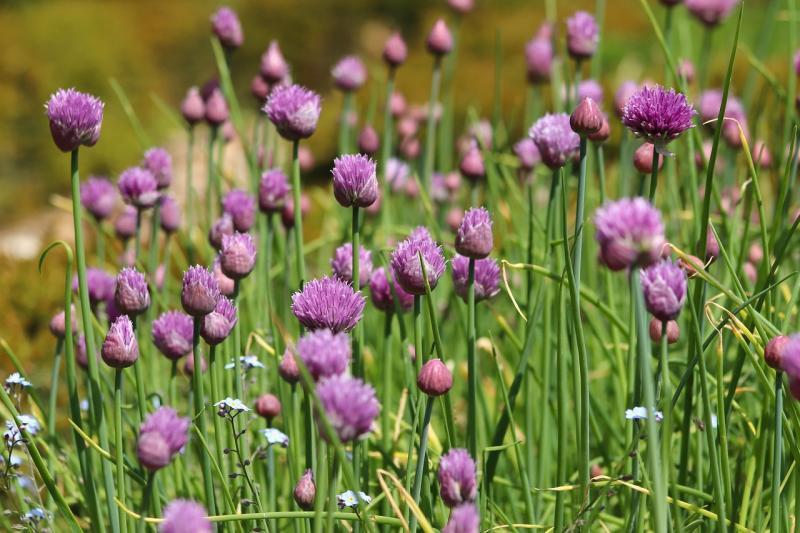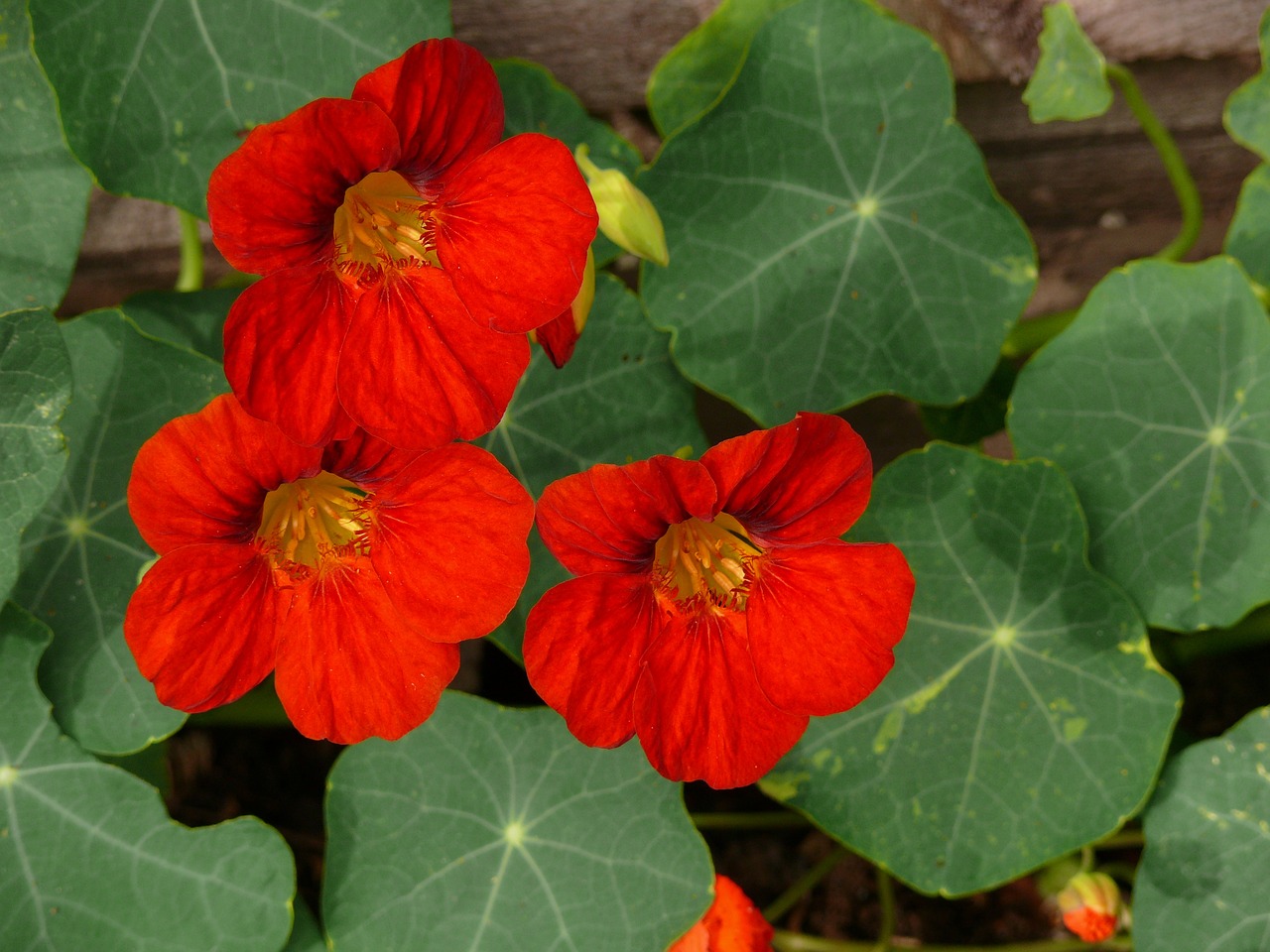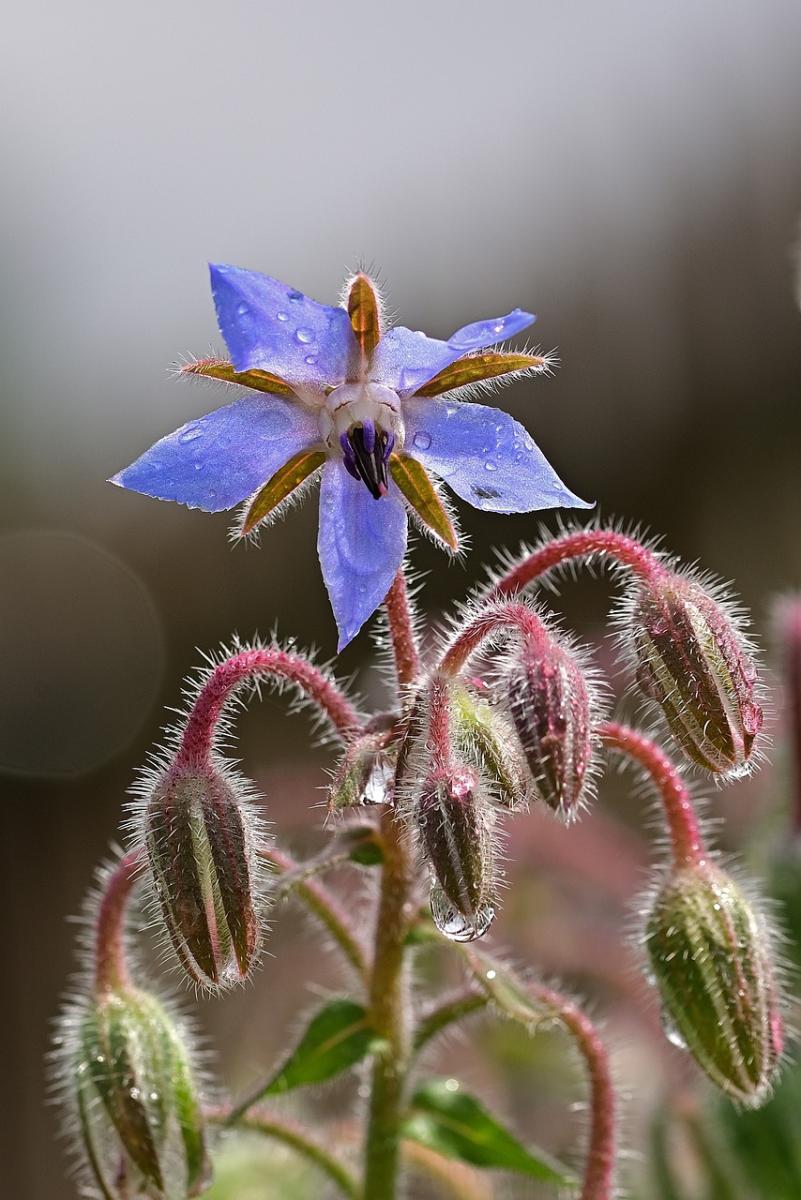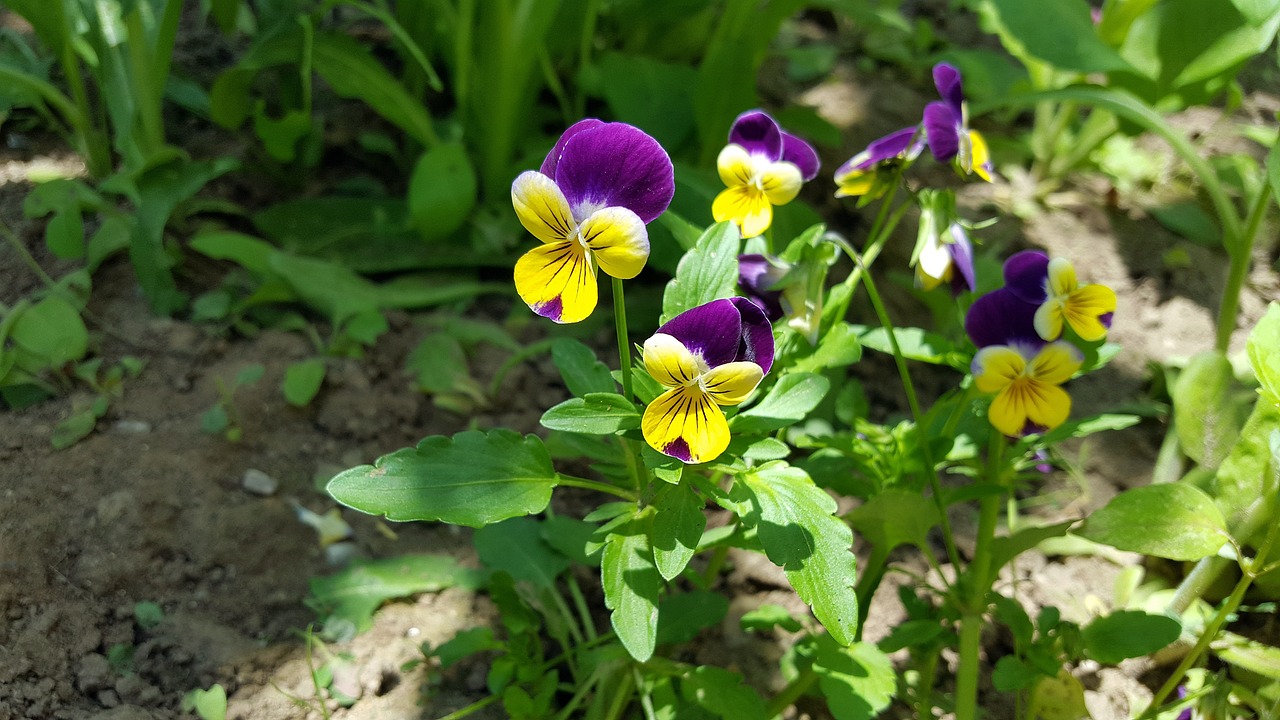
The culinary use of flowers dates back hundreds of years to the Chinese, Greek and Romans. Flowers have traditionally been used in many types of cooking. Edible flowers can be used fresh as a garnish or as an integral part of a dish, such as a salad. Some flowers can be stuffed or used in stir-fry dishes. Edible flowers can be candied; frozen in ice cubes and added to beverages; made into jellies and jams; used to make teas or wines; minced and added to cheese spreads, herbal butters, pancakes, crepes, and waffles. Many flowers can be used to make vinegars for cooking, marinades or dressings for salad.
 Cautions
Cautions
Not all flowers are edible. Some may taste bad and some are poisonous. Eat flowers only if you are certain they are edible.
Listed below are a few simple rules to follow before sampling flowers.
- Eat flowers only when you are positive they are edible. If uncertain, consult a good reference book on edible flowers prior to consumption.
- Just because flowers are served with food does not mean they are edible. It's easy and very attractive to use flowers for garnish on plates or for decoration, but avoid using non-edible flowers this way. Many people believe that anything on the plate can be eaten. They may not know if the flower is edible or not and may be afraid to ask.
- If pesticides are necessary, use only those products labeled for use on edible crops. Do not eat flowers from florists, nurseries or garden centers. In many cases these flowers have been treated with pesticides not labeled for food crops. Pesticides for use on fruits and vegetables have undergone extensive testing to determine the waiting period between treatment and harvest and potential residuals on food. Pesticides used on ornamentals have not been evaluated to determine their safety on food crops. Consume only flowers that you or someone else have grown specifically for that purpose.
- Do not eat flowers picked from the side of the road. Once again, possible herbicide use eliminates these flowers as a possibility for use.
- Remove pistils and stamens from flowers before eating. Eat only the flower petals for most flowers.
- Different flavors occur in plants when grown in different locations because of soil types, fertilization, and culture. Environmental conditions play a big role as well. What has excellent flavor at one time may taste different at the end of the season or the next year.
- Introduce flowers into your diet in small quantities one species at a time. Too much of a good thing may cause problems for your digestive system.
- If you have allergies, introduce edible flowers gradually, as they may aggravate some allergies.
- Enjoy the different flavors and colors that edible flowers add to many foods.
 Growing
Growing
Growing edible flowers is essentially the same as growing flowers for ornamental purposes. Most flowers require a well-drained soil. Use a 2 to 3 inch layer of mulch to reduce weeds, conserve soil moisture, maintain uniform soil temperatures and reduce the amount of soil splashed onto the plant during a heavy rain.
Irrigate to keep plants actively growing and flowering; most plants will need 1 inch of water per week. If possible, avoid overhead irrigation because moisture on the leaf surface for extended periods of time can increase the chances of disease development. Irrigating with a soaker hose works well.
Chemicals for pest control should be avoided, if possible. Hand pick harmful insects. Beneficial insects, such as lady beetles and praying mantids, can be used to decrease insect populations. Growing different flowers together provides diversity to support a good beneficial insect population and keeps pest problems low. Many gardeners locate their edible flower garden away from other ornamental plants to avoid chemical spray drift. Many edible flowers can be successfully grown in containers.
Harvesting
Flavor can vary with growing conditions and cultivars. Conduct a taste test before harvesting large amounts of a particular flower. Flowers should be picked in the cool of the day, after the dew has evaporated. For maximum flavor choose flowers at their peak. Avoid flowers that are not fully open, wilted or that are past their prime.
To maintain maximum freshness, keep flowers cool after harvest. Long-stem flowers should be placed in a container of water. Short-stemmed flowers should be harvested within 3 to 4 hours of use, placed in a plastic bag, and stored in a refrigerator. Damp paper towels placed in the plastic bag will help maintain high humidity.
Because pollen can distract from the flavor, it's best to remove the pistils and stamens. Pollen may cause an allergic reaction for some people. Remove the sepals of all flowers except violas, Johnny-jump-ups and pansies.
Only the petals of some flowers such as rose and lavender are edible. Separate the flower petals from the rest of the flower just prior to use to keep wilting to a minimum. Roses, dianthus, English daisies and marigolds have a bitter white area at the base of the petal where it was attached to the flower. Break or cut off this portion before using.
Immediately before using, gently wash the flowers to remove dirt and check for insects.
Edible Flowers to Consider for Your Garden
Here is a list of edible flowers to consider growing and harvesting for consumption.
Nasturtium,Tropaeolum majus. Blossoms have a sweet, spicy flavor similar to watercress. Nasturtiums are an easy plant to grow as well. They thrive in poor soil, sun or light shade and look wonderful in beds or hanging baskets. Many have a mounded growth form, but trailing varieties are available as well. They come in shades of yellow, orange and red. Pictured above left.
Signet Marigolds, Tagetes signata, are another popular edible flower. They have a lemon-verbena scent which is different from the common marigold. They like full sun and produce a mound of lacy foliage covered with blossoms. Even if you don't enjoy eating the flowers, you won't be disappointed with this flower choice in your garden. Orange and yellow flowered varieties are available. Popular varieties are Lemon Gem or Tangerine Gem.
Chives, Allium schoenoprasum, are common plants in many herb gardens, but very few people have enjoyed their blossoms. Separate the florets and enjoy the mild, onion flavor in a variety of dishes. This perennial grows to be a foot tall and does best in full sun. It spreads quite readily so you will have more to enjoy as well as some to share.
Calendula, Calendula officinalis, is another edible choice that makes a wonderful addition to the flower garden. Besides being edible, with a saffron-like flavor, the flower is mildew resistant and excellent used as a cutting flower. It grows best in full sun and flowers best in cool weather. The plant grows 1 1/2 feet tall. Flower colors are available in yellow and orange.
Borage, Borago officinalis, flowers have a cucumber-like flavor. The sky blue flowers add a different color to salads or fruit cups. Blossoms can also be candied or frozen in ice cubes. It self-sows in the garden and is excellent for attracting bees. The plant grows 2 to 3 feet tall and does well in full sun. Pictured above right.
 Johnny Jump-ups, Viola tricolor, have a wintergreen taste. They make excellent garnishes and can also be candied. Johnny Jump-ups make excellent additions to the flower garden. Plants resemble miniature pansies, grow 6 to 8 inches tall, and perform in sun or shade. They can also be used very attractively in containers. Pictures left.
Johnny Jump-ups, Viola tricolor, have a wintergreen taste. They make excellent garnishes and can also be candied. Johnny Jump-ups make excellent additions to the flower garden. Plants resemble miniature pansies, grow 6 to 8 inches tall, and perform in sun or shade. They can also be used very attractively in containers. Pictures left.
Anise Hyssop, Agastache foeniculum, is a tender perennial that will also bloom the first summer from seed. As the name implies, it has an anise flavor and both flowers and foliage are edible. It grows 2 to 3 feet tall in full sun. The deep lilac colored flower spikes bloom for several months. This plant is used in teas and sweet and sour marinades, as well as Chinese-style dishes.
In addition to the above plants, runner bean, squash, oregano, dill, thyme and savory also have edible flowers. A word of warning, use only the suggestions listed above or those found in a specialty book on edible flowers and plants. Not all flowers are edible and great care should be taken in identifying edible flower varieties.
Images by Pixabay.com
- Chives - feature image.
- Nasturtium often have orange flowers.
- Johnny Jump-ups are often bi- or tri-colored.
- Borage has beautiful sky-blue flowers.